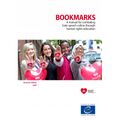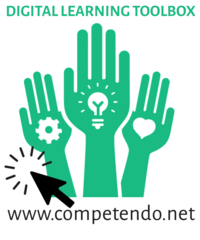Artistic and cultural expression are valuable resources for stimulating creativity and broadening the learners' ability to perceive and express. On a social level cultural activities and products are a mirror of our values and norms, our social diversity, our heritage and visions for the future. Recognizing this role of arts and culture for our lives, UNESCO seeks with the Seoul Agenda to develop a holistic conceptual frame for arts education.[1] It has two main elements.
Contents
Learning through the arts/culture
Utilizing artistic expressions and cultural resources and practises, contemporary and traditional, as a competency learning tool under an inter-disciplinary perspective.
learning in the arts/culture
Stressing the value of cultural perspectives, multi and inter-cultural, and culturally-sensitive languages through learning processes, as a tool for promoting the idea of cultural diversity.
Cultural Education
"Cultural education is personal development using forms of cultural expression, arts and playing. It is a prerequisite for cultural participation". (BKJ)[2]
Quality features of artistic and cultural education
The starting point is a creative learner, being able to initiate new things and to shape processes and works. Arts Education is supporting learners then with the tools and skills offered through arts and cultural work. The German Federal Association for Cultural Youth Education [3] developed basic quality standards rooted in the idea of competency centered facilitation.
Arts and cultural expression as a starting point and frame
Works, processes and methods are instruments for autodidactical learning resulting from aesthetic perception and experience. Perception and creative activity are put into dialogue. They are enriched by reflection. A diversity of forms and styles allows learners to broaden their repertoire for expressing and ideating.
Resource Orientation
Existing strengths and talents of learners are in the centre. The main focus is set on the activation of individual potentials by strengthening the strengths and talents. Topics and subjects are through the learners perceived as interesting and inspiring. There is a connection of the subjects to the social reality of learners. The decisions on the way an educational process takes and what kind of instruments it uses are a result of a participatory negotiation. The individual ways of (youth)cultural expression are appreciated.
- More: Resource Orientation
Participation
Learners are perceived as experts on their educational process and co-create it, including the choice of topics, questions and ways of work. They are not enforced to participate. The processes stimulate learners to take a stand, to discuss their positions in dialogue and learn to involve in group decisionmaking. Learners experience self efficacy and are perceiving their ability to create works in a successful way.
- More: Empowerment
Personal Competence Development
A mix of emotional, cognitive and social learning and a variety of methods and opportunities for expression is involved.
- More: Method Mix
Diversity and Inclusion
Individuality and social diversity are appreciated. The learning process makes use of multiperspectivity. Diverse needs are respected and the learning space is shaped according to these needs of individual learners.
These criteria show that artistic processes are, even if they are collaborative, not necessarily suitable for art education. The idea of artistic mastery and leadership sometimes conflicts with the ideal of empowerment as a tendencially open process. A strong result or product orientation can conflict with needs orientation. The role of a curator, instructor, artistic advisisor, director or dirigent needs to be completed through the pedagogical attitude of a facilitator. The process design of educational arts projects needs to include space for group experience and reflection, for individual learning curves and for cooperative learning.
Creativity
Creativity is an ability that helps us process the wealth of information that our minds collect and forge connections between different pieces of information in order to find a solution to a problem in a new way, or to come to a new understanding of the problem itself. It is a fundamental aspect of creation, a proactive and future-directed process involving intellectual, material and social resources.
Creative Facilitation at Competendo:
More background information and methods for stimulating creativity and designing creative learning processes: Unleashing Creativity
Visual Literacy
Visual communication and design are natural elements of modern education. This is demonstrated, for example, by visual facilitation or the entire range of workshops offered in this area. Visual material, and increasingly in moving form, is being integrated as content and form into educational programs (illustrations, videos, infographics...). And last but not least, the visual is the subject of reflexive education, especially in critical cultural education: Education about images, their meanings, links or effects.
Competence in visual communication
"Anyone with a smartphone and an internet connection can create and share images, contributing to a vast visual ecosystem. As a result, being educated involves not only consuming images but also actively participating in image creation, curation, and analysis. It requires individuals to become proficient in visual communication, harnessing the power of images to convey ideas, advocate for causes, and engage in meaningful dialogues" (Pezzano, p. 13)[4].
Drama and Play
Theatre reflects the reality and shows us different points of views and interpretations of life. At the same time, theatre and play are a method or space for reflection for the actors and audience, no matter if played in a official theatre, on the street or in a classroom. The performative opens up another dimension to educational processes where, for example, one can act out, reflect on and change behavior. Or one can practice expression and posture, learn and expand language, work with music and sound, experience playfulness, or give expression to things that are otherwise not easy to express. Theater and music are also a collaborative process. Performing and laughing together creates an atmosphere of trust. Working on and with the body is an essential element of this. In an educational context, play aims in particular to turn the audience into participants and co-creators - from witnesses to actors.
Playfulness and Gamification
The reflections on performative play can be continued. Play is also used as an element in other contexts beyond cultural education - 'playful' methods, serious games, or even the joint development of games with learners.
A game enriches everyday life with something extraordinary and exciting. It triggers curiosity and strengthens our ability to perceive, perform and to relate with each other. Therefore, it promotes the formation of social groupings (Huizinga, 1949, p. 13)[5].
Although the words play and game are often associated with children‘s activities, everybody experienced the seriousness behind playing, latest when one is sought into a game, a competition or a group activity. Game-based Learning uses this effect to design playful learning processes also for facilitating serious topics.
Game
Game describes a more narrowly defined variant of playing. "A game is a system in which players engage in an artificial conflict, defined by rules, that results in a quantifiable outcome” (Salen & Zimmermann, 2004, p. 94)[6].
Gamification
This distinction becomes important when the considerations turn to 'gamification'. Basically gamification means to transfer aspects of games into other contexts, in example by adding game elements or integrating game design in usually not playful contexts (Deterding et al., 2011) [7]. This does not necessarily mean promoting playfulness. On the contrary, gamification is increasingly being used to instrumentalize it, for example in some apps. In this respect, cultural education also includes a critical approach to games and gamification.
Active and Critical Media Competence
Under the conditions of modern media environments the ability to sucessfully navigate and create information and also to give shape to it is becoming a more and more relevant for any learner. Inline with progressing developments of the digital transformation especially our assumptions about media and definitions of media competence needed to be constantly applied. Media and Information Literacy is becoming an indispensable element of holistic learning - as part of arts education, digital learning or empowerment for active citizenship. Evidence shows especially the crucial role of civil society and non-formal learning (among others European Audiovisual Observatory, 2016 [8] for facilitating media and information competence. Inline with the second law of UNESCO's five MIL laws it must be seen as an active competence and important ingridient of empowerment: "Every citizen is a creator of information/knowledge and has a message. They must be empowered to access new information/knowledge and to express themselves"[9].
A modern approach to media pedagogy should focus on the wide range of lifelong learners and no longer focus primarily on young people.In addition, we can learn from modern media education more than from other fields of education, to recognize our participants not only as users, but as prod-users, producers and users of content in one person. Learning but also competent. Reflecting and actively experimenting at the same time.
Five laws of media and Information Literacy
Law One
Information, communication, libraries, media, technology, the Internet as well as other forms of information providers are for use in critical civic engagement and sustainable development. They are equal in stature and none is more relevant than the other or should be ever treated as such.
Law Two
Every citizen is a creator of information/knowledge and has a message. They must be empowered to access new information/knowledge and to express themselves. MIL is for all – women and men equally – and a nexus of human rights.
Law Three
Information, knowledge, and messages are not always value neutral, or always independent of biases. Any conceptualization, use and application of MIL should make this truth transparent and understandable to all citizens.
Law Four
Every citizen wants to know and understand new information, knowledge and messages as well as to communicate, even if she/he is not aware, admits or expresses that he/she does. Her/his rights must however never be compromised.
Law Five
Media and information literacy is not acquired at once. It is a lived and dynamic experience and process. It is complete when it includes knowledge, skills and attitudes, when it covers access, evaluation/assessment, use, production and communication of information, media and technology content.
Source: Five Laws of MIL[9]
Articles, Checklists and Methods
Ressources: Creativity
Visual facilitation Cookbook
Estonian UNESCO Youth Association's, Biedrība Piepildīto sapņu istaba's and cooperativa braccianti's cookbook on visual facilitation and graphical recording.
DownloadCreative Writing Cookbook
Estonian UNESCO Youth Association's, Biedrība Piepildīto sapņu istaba's and cooperativa braccianti's cookbook on creative writing.
DownloadGraphic Harvesting
A short and inspiring practice bookpublished by Leargas, Irish National Agency of Erasmus+, in cooperation with SALTO Training and Cooperation.
DownloadCreativity Handbook
Building connections, drawing inspirations & exploring opportunities as individuals & groups.
Download
Resources: Digital & Media Competence
Digital Citizenship Education Handbook
by Council of Europe. Being online. Well-being online. Rights online
DownloadLearning the Digital
Competendo handbook
moreBookmarks
CoE's manual for combating hate speech through human rights education
DownloadMedia Literacy for Global Education
Toolkit for Youth Multipliers by North-South Centre of CoE
DownloadDigComp 2.2: The Digital Competence Framework for Citizens
2022 edition of the EU framework
DownloadDigital Competence of Educators
What has digital competency to do with you as a teacher or educator?
Download'DigCompSat
DigComp 2.1 Self Assessment Tool
DownloadDigital Citizenship Education - Trainers' Pack
The concept of DCE applied in education and learning, published by Council of Europe
DownloadDigComp into Action
A guide on how to make use of the DigComp framework
DownloadFI.DO Training Material
FIghting fake news and DisinfOrmation in a lifelong learning context.
DownloadDIGIT Manifesto and guidelines for adult educators
Boost Competences for responsible online identity
DownloadDigital competence toolbox for youth work
Verke's toolbox includes criteria for digital competences, a self-assessment tool and also an online test.
onlineHuman vs AI Test
Can We Tell the Difference Anymore? By K. Rajnerowicz
OnlineMaker activities in youth work
A reader about maker culture and youth work by Verke
DownloadHandbook Educational Robotics
From the eMedia Project: Media Literacy and Digital Citizenship for All.
DownloadDOIT Toolbox
from the project DOIT - Entrepreneurial skills for young social innovators in an open digital world
OnlineMakerspaces for Education and Training
Exploring future implications for Europe, by JRC
DownloadTech for Good
Possibilities and limits of using digital instruments in international development projects of NGOs
DownloadYour Data Mirror
Learn about the mechanisms of data collection and the impact this practice on society. By Interactive Media Foundation.
onlineHandbook Media Literacy
From the eMedia Project: Media Literacy and Digital Citizenship for All.
DownloadOnline test: filter bubble
interactive introduction by Zentrum fir politesch Bildung (ZpB) Luxemburg
OnlineEU vs. Disinfo
The EU portal on disinformation
onlineOpen your eyes
Handbook: How to identify and tackle online disinformation?
DownloadOpen your eyes
Database: Fake news
OnlineSTEPS -Survival Toolkit for EDC in Post-factual Societies
Texts, studies and methods from the project STEPS DownloadVisual Literacy
How to think and act with images?
DownloadCinema Stories
Working with movies
Read moreFreedom of Press Report
by RSF - Reporters without Borders
OnlineDigtal News Report
by Reuters Institute for the Study of Journalism
Online
References
- ↑ UNESCO: Seoul Agenda: Goals for the Development of Arts Education
- ↑ German Federation for Arts Education (BKJ). What is cultural education?. Bundesvereinigung Kulturelle Jugendbildung.
- ↑ Bundesvereinigung Kulturelle Jugendbildung: Arbeitspapier „Aufwachsen mit Kunst, Kultur und Spiel. Qualitätsmerkmale für die Kulturelle Bildung
- ↑ Pezzano, S. (2023). Report on Visual Media Literacy in Europe. Zenodo. https://doi.org/10.5281/zenodo.10021764
- ↑ Huizinga, J. (1949). Homo Ludens: A Study of the Play-element in Culture, London
- ↑ Salen, K.; Zimmerman, E. (2004). Rules of Play: Game Design Fundamentals, Cambridge
- ↑ S. Deterding, S.; Dixon, D.; Khaled, R. Nacke, L (2011). Gamification: Toward a Definition. CHI 2011, May 7–12, 2011, Vancouver, BC, Canada
- ↑ European Audiovisual Observatory, 2016. Mapping of media literacy practices and actions in EU-28. Strasbourg 2016.
- ↑ 9.0 9.1 Grizzle, A. & Singh, J. (2016). Five Laws of Media and Information Literacy as Harbingers of Human Rights. A Legacy of Ranganathan’s Five Laws of Library Science. In: Singh, J.; Kerr, P.; Hamburger, E. (2016). Media and information literacy: reinforcing human rights, countering radicalization and extremism. The MILID yearbook, UNESCO, Paris.




































